Have you ever wondered what life was like for the 1940s housewife? How did she care for her family and support her country during wartime hardships?
Image by Library of Congress
See Also:
Vintage Housewife: What Was Life Like at the Turn of the 20th Century?
What Was Life Like for the 1920s Housewife?
1930s Housewife: Life During the Great Depression
1940s Housewife
Coming off the incredible challenges of the Great Depression in the 1930s, the 1940s housewife was faced with a whole new challenge: wartime life.
Image by Library of Congress
The 1940s Housewife During the War
With World War II raging, women found themselves in unchartered waters. Because so many men were taking part in the war effort, women were left to handle things on the home front.
As a result of men being away at war, there was a labor shortage that required women to join the workforce. In addition to managing their households, many women now also worked a day job.
There was a major increase in the amount of women working outside the home. During the war, about half of women in the United States were working outside of the home.
What was also unique about this shift in women working outside the home is that more married women were among them. In previous decades, it was rare for a married woman to work outside the home.
Many women who lived in rural areas did not take on outside jobs, but instead worked long and arduous hours on their personal farms.
Image by Library of Congress
Women and the War Effort
As men went overseas to fight the war, women stepped up to take the jobs that they left behind. In total, over 6 million women took on wartime jobs, while 3 million volunteered for the Red Cross, and over 200,000 actually served in the military in auxiliary units.
Since women were not allow to fight in combat, many served as nurses or performed other duties for the military, such as assisting with training soldiers, office work, transporting supplies, performing repairs on military equipment, and as radio operators.
Image by Library of Congress
Rationing During the War
In addition to taking on the extra burdens that came with wartime life, the 1940s housewife also faced the task of feeding her family on a budget, while rationing was in place across the country.
While rationing affected how much and what type of food women had to work with, the 1940s housewife worked to make the most of what she had.
The most common items that were rationed were sugar, coffee, meat, fish, butter, eggs, cheese, and canned goods.
There were a number of ways in which women stretched their food as far as possible. Since sugar was hard to come by during the war, they made a lot of low sugar desserts. And to make their coffee stronger, they added chicory root to it.
As a way to stretch meat and use up leftovers, women would make soups, casseroles, and meatloaf. Sometimes families got together for a potluck dinner as a way to pool together the resources they had.
Food was not the only thing that was rationed during the war. Fuel was also something that the 1940s housewife had to be conscience of.
As a way to save on fuel, people used public transportation and also shared rides to get to work. People also walked a lot more to get to places.
Perhaps the greatest sacrifice in this area is that families did not travel to see each other during this time. Choosing to forego the typical holiday get togethers and other family events, families were committed to saving fuel in order to send it towards the war effort.
People also did the best to take care of their clothes. Rather than buying new clothes, they repaired and mended their clothes as much as possible. Once an item was no longer able to be worn, it was set aside as scrap to piece together for a new garment or other purpose.
Image by Library of Congress
Victory Gardens
Another way in which women helped with the food supply during the war was to grow their own food by planting a Victory Garden. Victory Gardens first came about during WWI and saw a resurgence during WWII.
Image by Library of Congress
Since canned food was needed to send to military troops, on the home front, people grew much of their own food. They got as creative as possible, using containers, apartment rooftops, backyards, and village greens to grow food. Eleanor Roosevelt even had a Victory Garden at the White House.
Image by Library of Congress
In total, 20 million Americans participated in the Victory Garden effort during WWII, and 9-10 million tons of produce was harvested.
A byproduct of Victory Gardens is that people needed to preserve their harvest. This meant that home canning became very common during the war.
Image by Library of Congress
1940s Housewife Fashion
I came across a description of the 1940s housewife that I think just perfectly describes these women and all they endured during the war. It said that women of the 1940s were made of “style and substance.”
These women worked so hard during the war to support their families and country in the midst of crisis, yet they also put their best foot forward to present themselves well to society.
Image by Library of Congress
Another victim of rationing was fabric, which presented a challenge in the clothing department. Silk in particular was hard to come by as it was used to make parachutes.
During the 1940s, dresses started becoming shorter because there was less fabric with which to make them. As a result, knee length dresses and skirts came into style. As a continuation from the 1930s, flour and feed sack dresses continued to be put to use as well.
As zippers and metal snaps were hard to come by, wrap around skirts also came into fashion.
Image by Library of Congress
With women working in factories, there was also the practical side of clothing that needed to be considered. Women began to wear overalls and trousers for the purposes of practicality and comfort in the workplace.
Since shoes were also rationed during the war, many women chose to wear loafers as they were practical and long lasting.
Rural Life in the 1940s
The 1940s were a challenging time for farmers. With the war effort at full tilt and an army of men as well as other countries to feed, farmers were pressed to increase production. Yet, they were also forced to deal with a shortage of workers, gas, equipment, and parts.
Image by Library of Congress
The role of the famer in the war effort was so valued, that farmers were deferred enlistment because they were needed to work on the home front.
In previous decades, there was a stark divide between urban and rural areas and access to electricity. The 1940s would finally see that divide bridged.
Image by Library of Congress
The Rural Electrification Administration (REA) started in the 1930s in an effort to bring electricity to rural areas. In 1930 only 13% of farms had electricity.
At the time of Pearl Harbor in 1941, that number was up to 33% of farms, along with 25% of farms that had telephones.
By the end of the 1940s, thanks to the efforts of the REA, nearly all rural homes in the U.S. had electricity, and the effort to bring telephones to rural areas also continued.
Image by Library of Congress
Post War Life for the 1940s Housewife
The war changed a lot of things, and was particularly impactful on women. Since they had been charged with keeping things running on the home front, they showed themselves to be very adept in the workplace. Many women wished to stay on at their jobs, however with men returning home from the war, they had to give way.
Men who had been at home returned home with new skills and knowledge that they had gained. Additionally, with the GI Bill in effect, many men took the opportunity to further their secondary education and purchase homes through provisions granted in the bill.
As a result of all this, and other factors, the economy and technology took off after the war.
Post War Pop Culture
With the war ending in 1945, there was a strong desire to move on. The 1930s and early 1940s had been filled with numerous hardships. People were ready for more levity in life.
As such, the pop culture of the postwar 1940s was focused on fun things, such as dancing, sports, television, movies, and toys.
Restaurants became popular. And as if tossing all the effort of Victory Gardens to the wind, there was a large increase in demand for prepared and packaged foods available in grocery stores.
Since gas was no longer rationed, people drove a lot after the war. During this era, drive in restaurants and drive in movies became very popular.
Image by Library of Congress
Some popular games and toys from the 1940s that are still enjoyed today include: Candyland, Legos, Slinky, and Silly Putty.
Television
The 1940s were the dawning age of television. Television went from being practically unknown to becoming a fairly common household appliance in just a few short years.
The television was first demonstrated and sold in 1939 at the World’s Fair in New York. Interestingly, the production of televisions was banned during WWII so that efforts could be put towards focusing on developing war technologies, such as radar.
When the war ended in 1945, not many Americans even knew what a television was. However, by 1949 the cost of production on televisions had become low enough that they were fast becoming a common household item.
Unlike with electricity, farmers were not too far behind in acquiring televisions for themselves. The mass production of televisions began a shift in the culture. Rather than gathering around the radio as a family, they now watched television together. The entertainment industry experienced a big boom as the country became enthralled with the television.
Conclusion
There is no doubt that the 1940s housewife played an instrumental role in supporting the war effort. Whether she joined the Red Cross and served as a nurse, donned her overalls and went to work in a factory, put in arduous hours on her family’s farm, supported her community by growing and canning food, or kept careful stock of her rations. Our country would not have kept afloat without her admirable efforts.
Image by Library of Congress
It is understandable that after so many years of hardship that the country would desire to move on. The second half of the decade saw a swift change in culture and technology. In many ways, the 1940s set the stage for further cultural changes that would take place in future decades.
What are your thoughts about life for the 1940s housewife? What do you most admire about her? What do you think was her greatest struggle of all? Share your thoughts in the comments below!
Other Posts in the Series:
Vintage Housewife: What Was Life Like at the Turn of the 20th Century?
What Was Life Like for the 1920s Housewife?
1930s Housewife: Life During the Great Depression
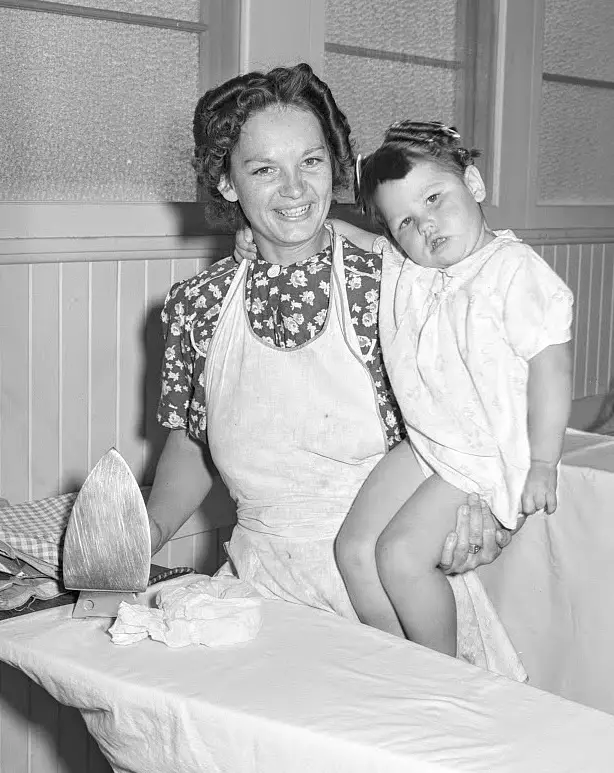
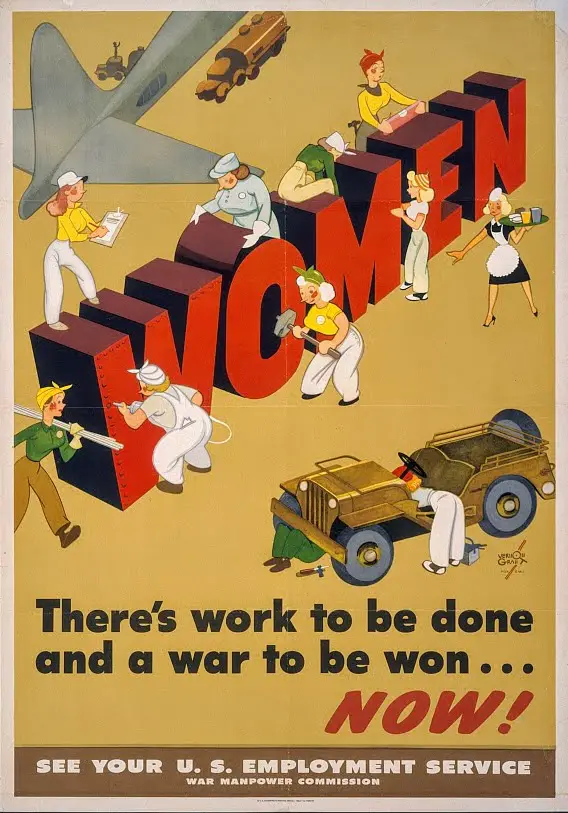
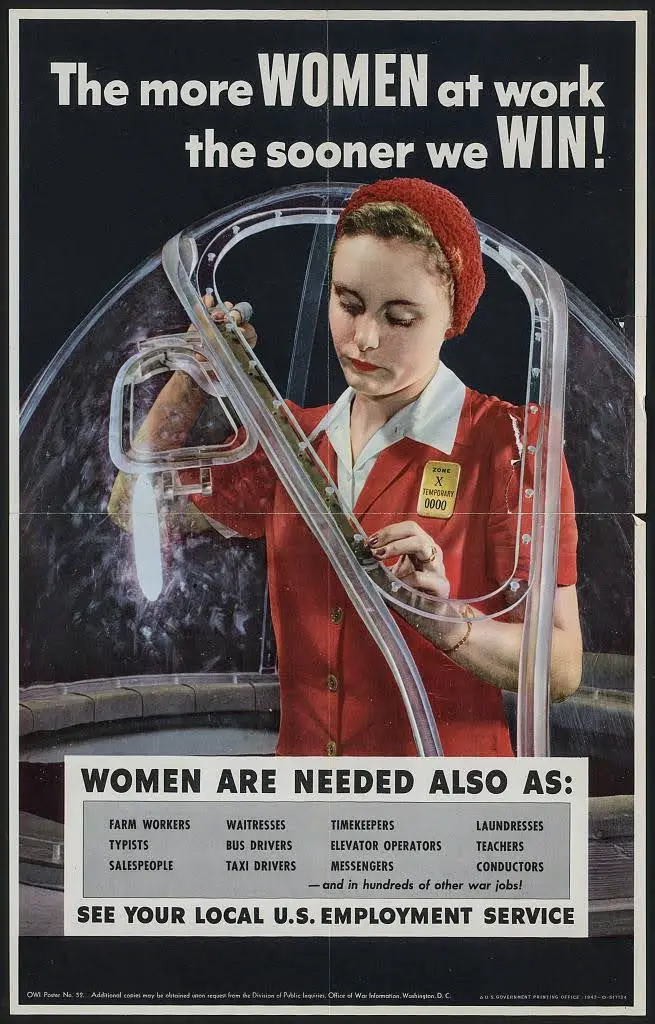
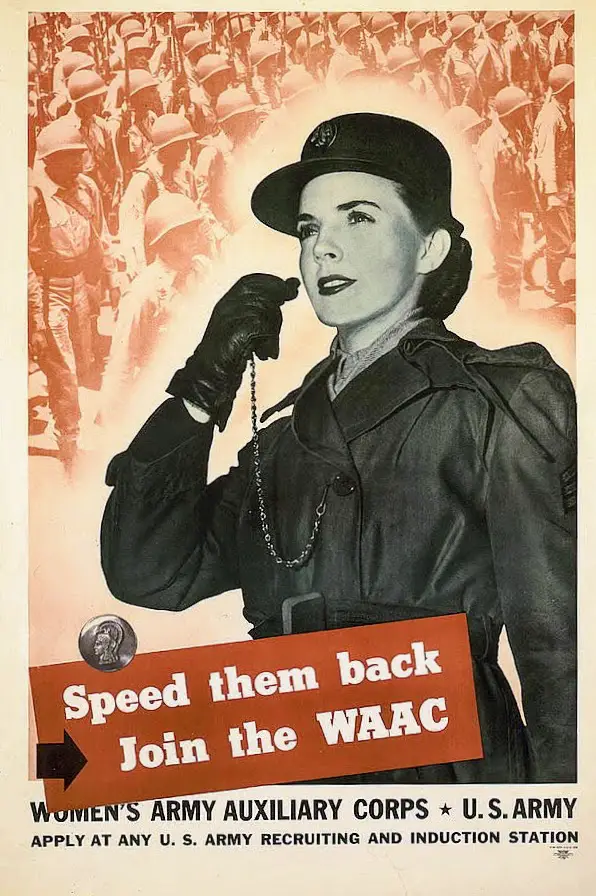
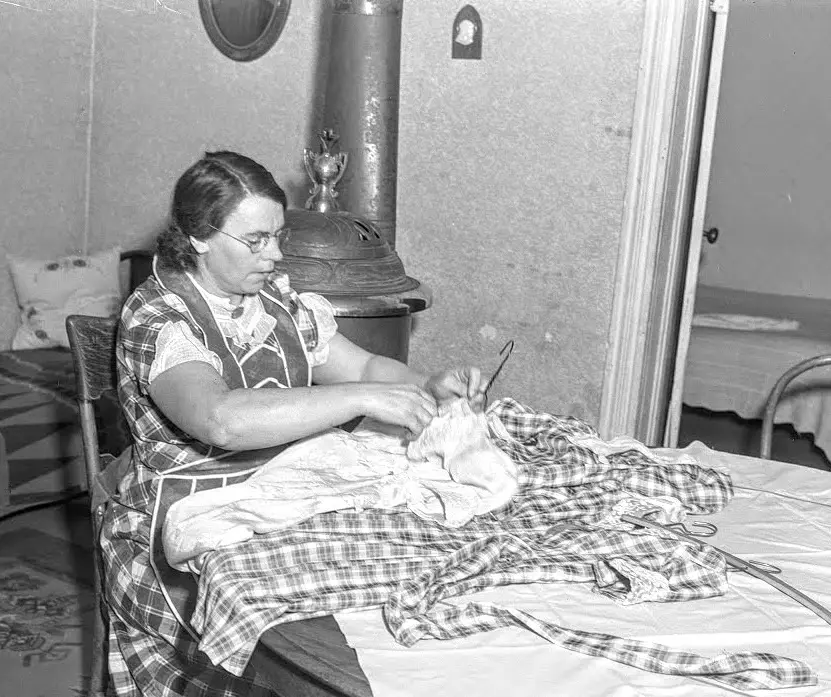
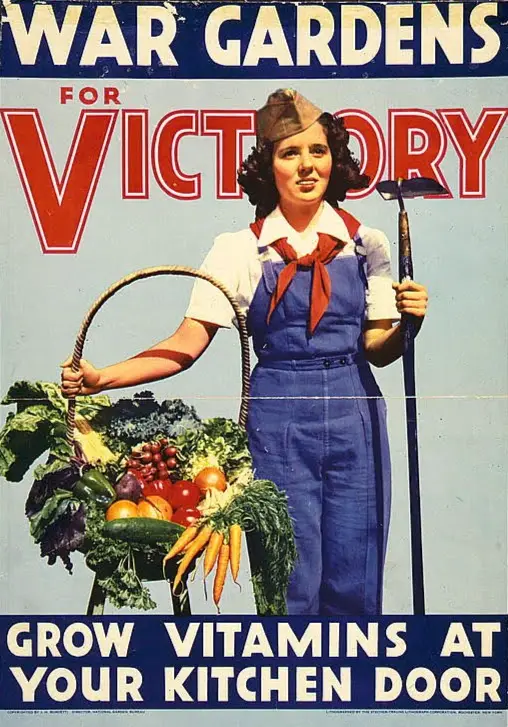
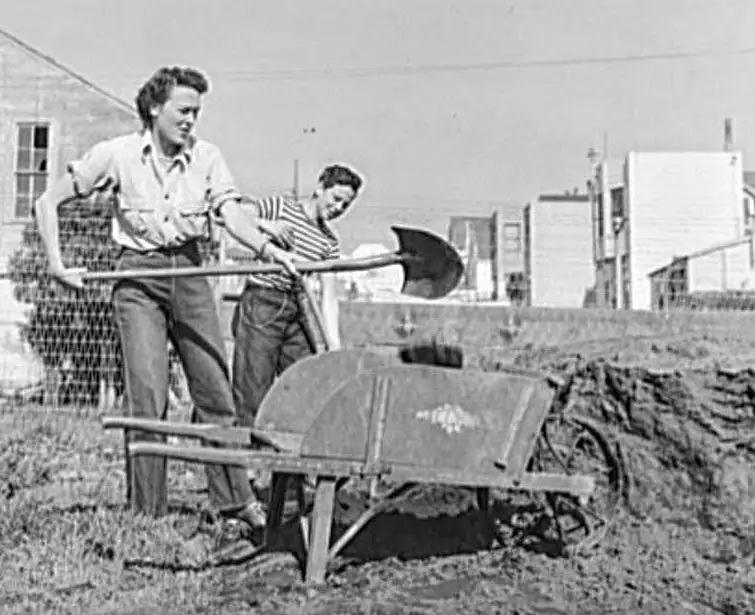
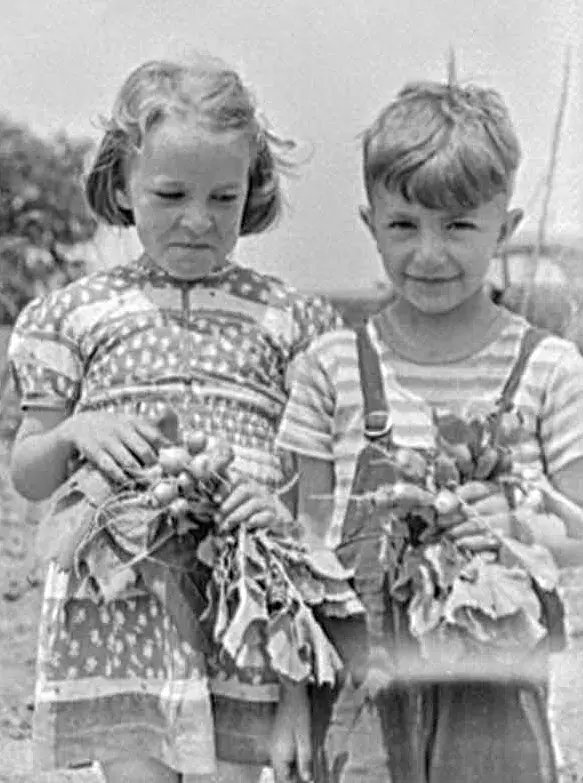
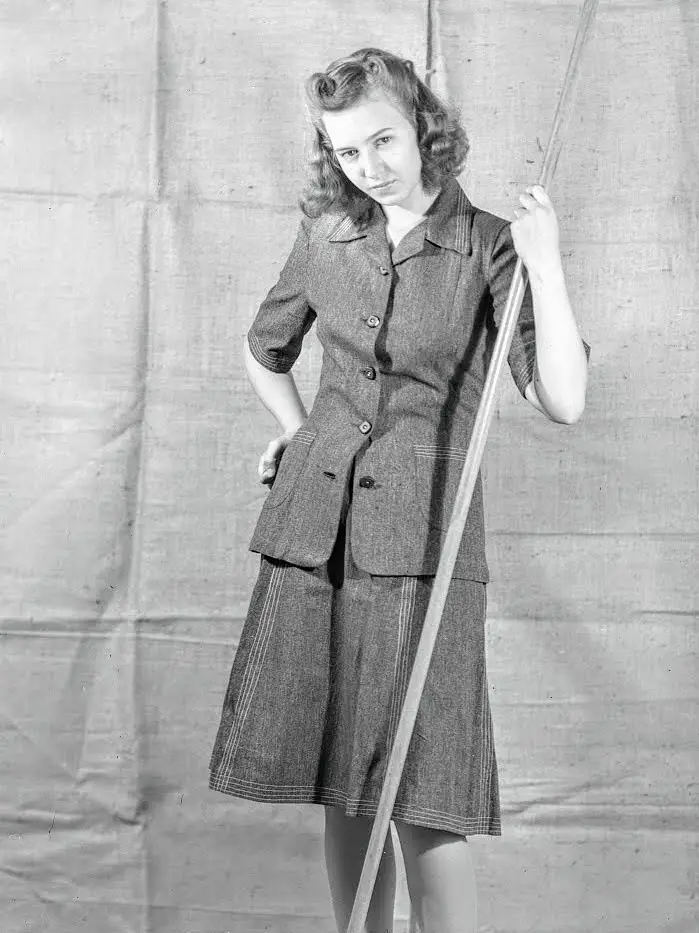
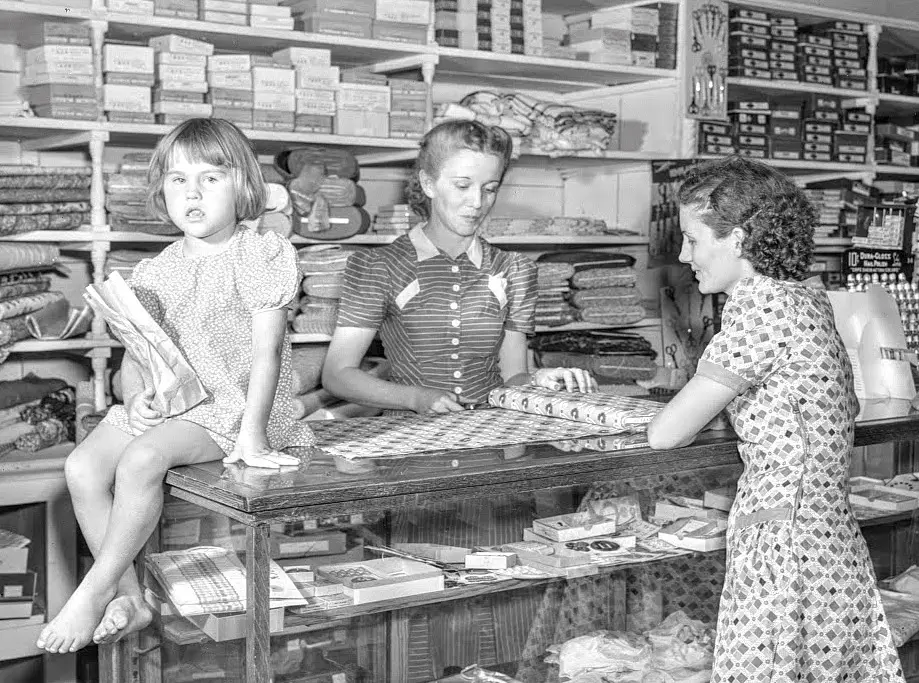
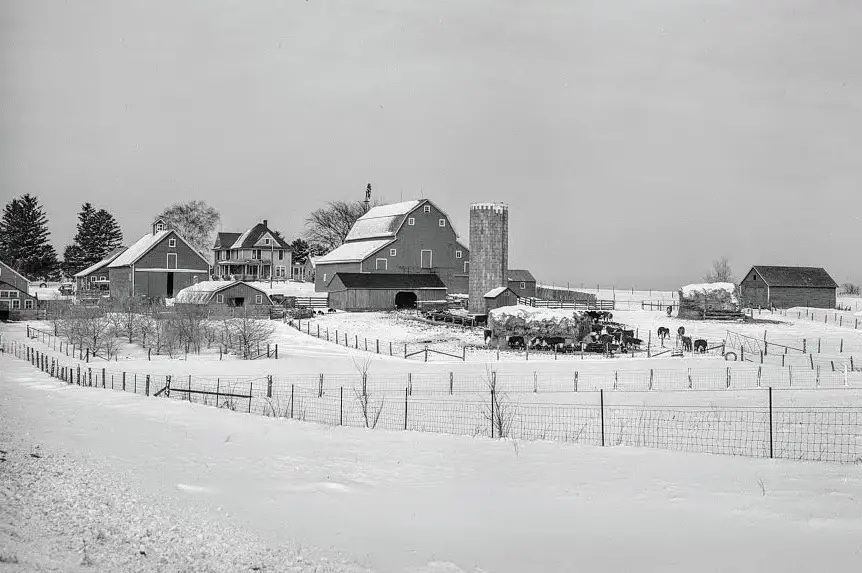
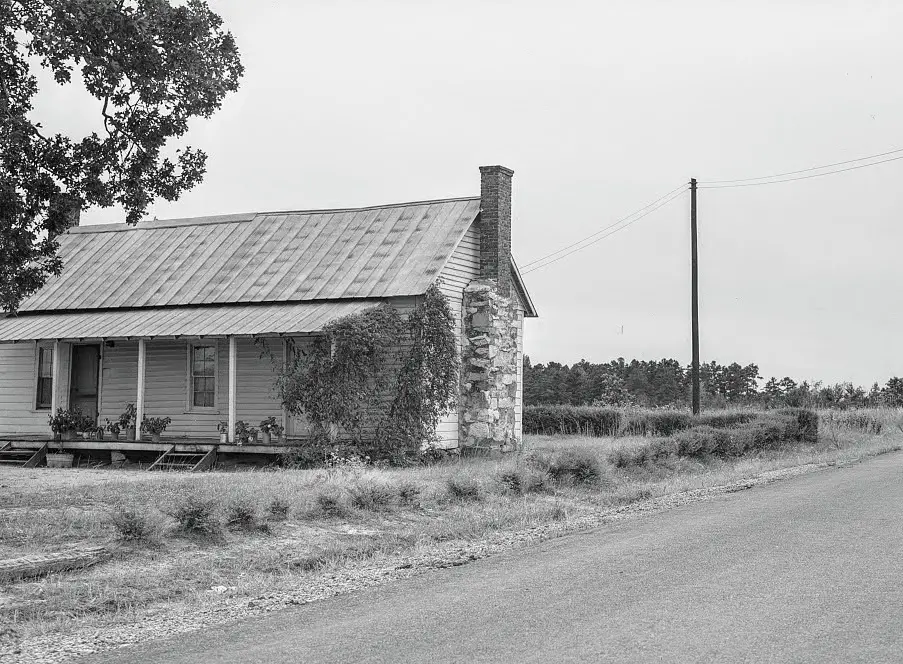
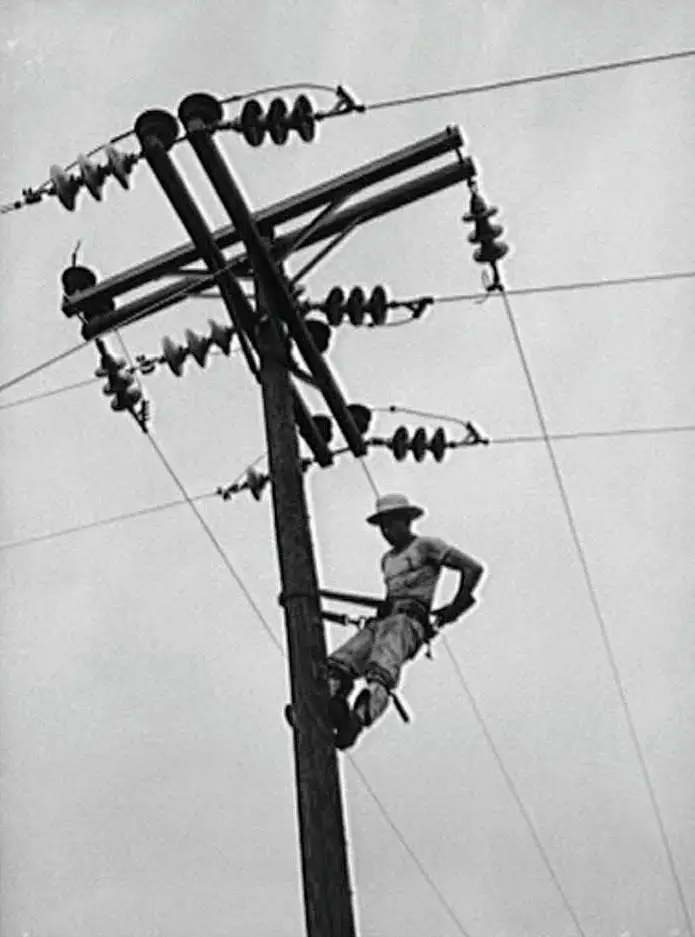
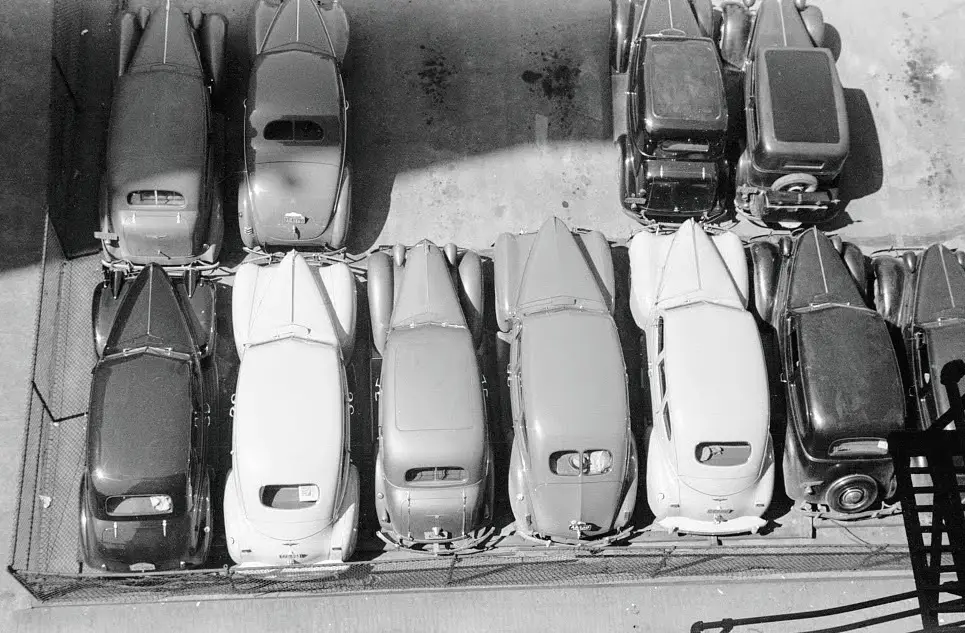
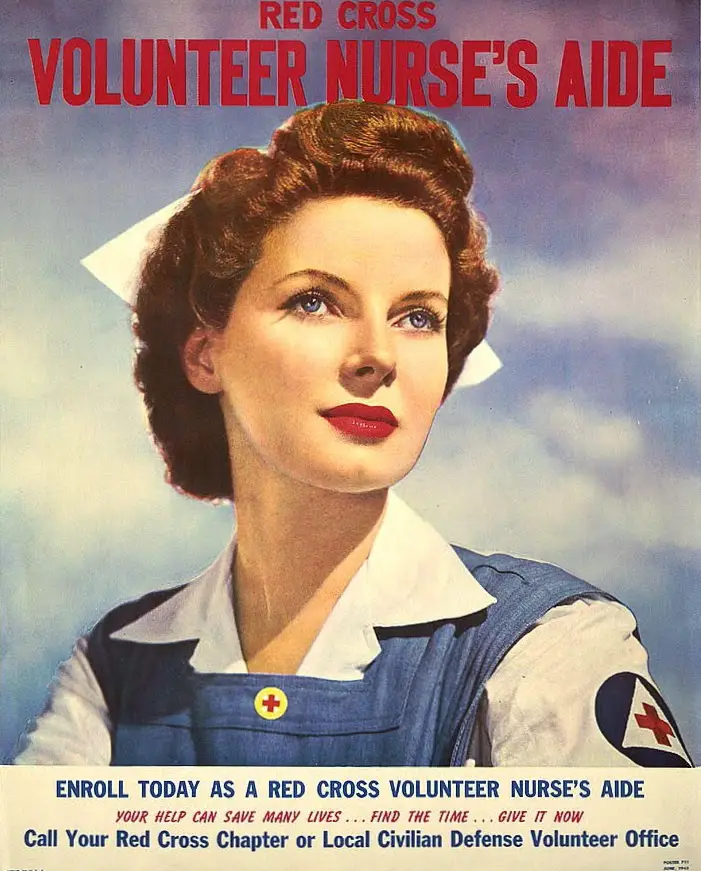
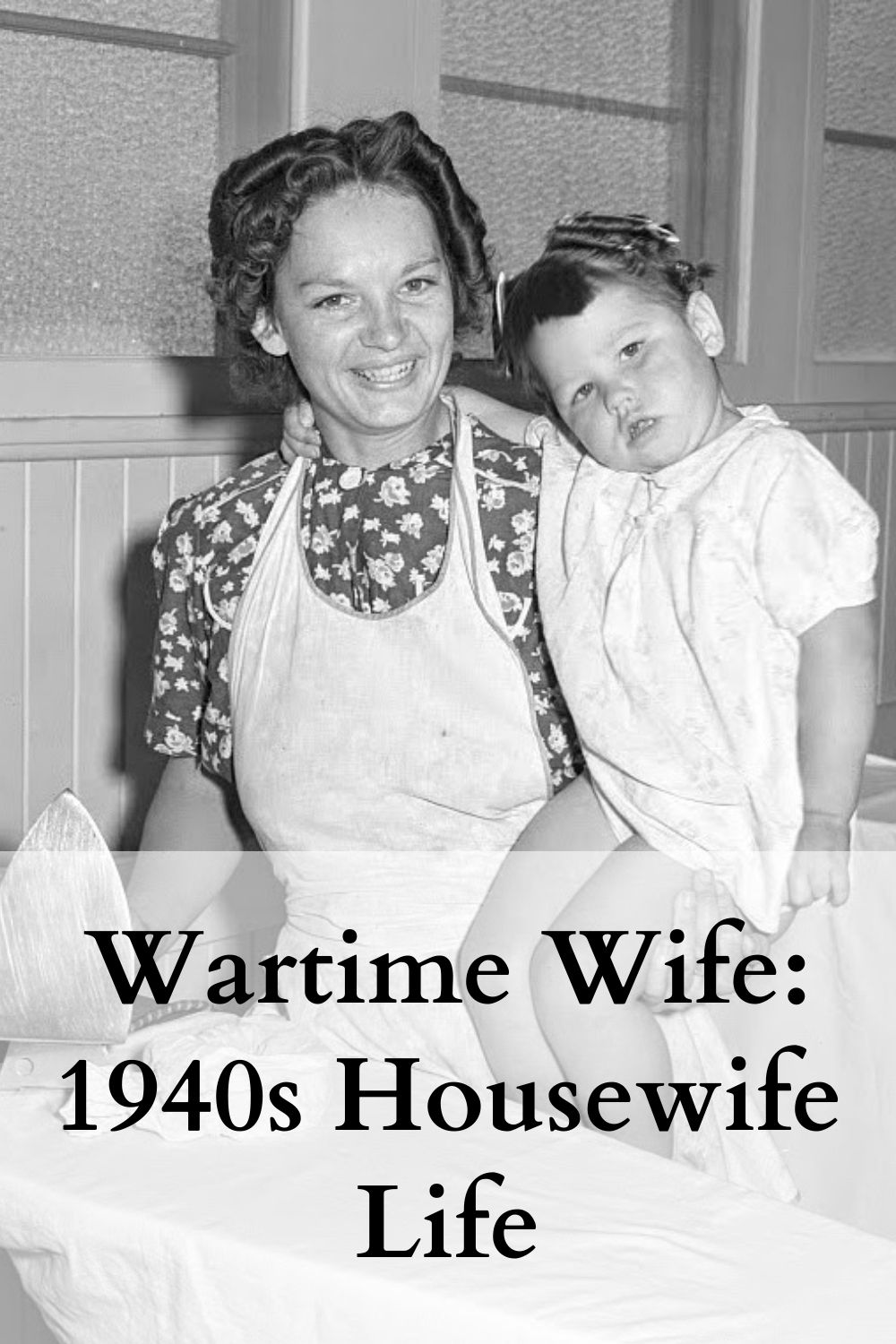

Thank you for this interesting and informative blog, Maggie. Although I wasn’t born until 1951; our family was not exactly early adopters, so some of the pictures brought back memories! We had wood stoves, and were really excited when a neighbor gave us the “Ashley” stove so we could heat the living room that was closed off for the winter by the wooden folding doors. The ironing board was always up in the dining room, and I can remember Mom spending hours ironing the clothes that had been dampened with the sprinkler bottle. It seemed like a peaceful and rewarding task, although I’m sure ironing for five girls must have been a big job, especially on a hot day.
The war certainly impacted every aspect of life. Although Grandpa Macs two older brothers received farm deferrals, he was the brother drafted.. His letters from that time are so interesting, One of them talks about being in the south for basic training and helping a woman in the field. If I remember correctly, it wasn’t an assignment, just something he and his friends happened upon.
Thank you for sharing these memories! They are so special.
This is so a nice glimpse into the past! It really helps to stay grateful and relearn lost skills by looking to the past.
Yes, I find so much value in learning about how other generations lived.
This was such a joy to read! One of my favorite articles yet. Well done!
Thank you! It is such an interesting topic to learn about.
This is so interesting! It’s crazy to think that these pioneers opened the door for a lot of women to have more choices. Great read!
I’m glad you enjoyed it!
such an interesting read,,, I was born in 48′, and we had some hardships, as there were 7 children and my aunt lived with us, we had no bathroom or inside water, the only heat we had was a coal stove, and oil stove back to back. my mom worked and still canned,and sewed a lot of our clothes and my uncle next door had a wonderful garden, which he shared with our family. after the war, Dad worked for the railroad. I didnt consider us poor, I think I would do very well in the 40’s , and I so admire the women, I hope they received the credit they deserved, thank you
Tires were hard to come by, rubber was needed for the war effort. Mom said Everytime you went to town you got a flat tire.
Mom and dad were newly married.. one baby.
Dad worked as a hired hand on the big farm down the road, SIX days a week.
Roads were so muddy in the spring that only horses and tractors could navigate them.
Mom’s Dad would meet up with my dad and bring groceries in huge gunny sacks.
The horse wouldn’t hold still. LoL. So Grandpa threw the sacks to my dad , once the horse was turned to home he was on a dead run.
Mom waited on the porch, Dad slowed but couldn’t stop, so he tossed the sacks
Mom was 18 yr old city girl, but never complained.. she did say she was pretty sad to see all of the eggs were broken.
Meat was Only on Sundays and that was if dad shot a rabbit.
Not too long after living there they were able to get chickens of their own. Eggs in abundance & chicken dinner or two.😊